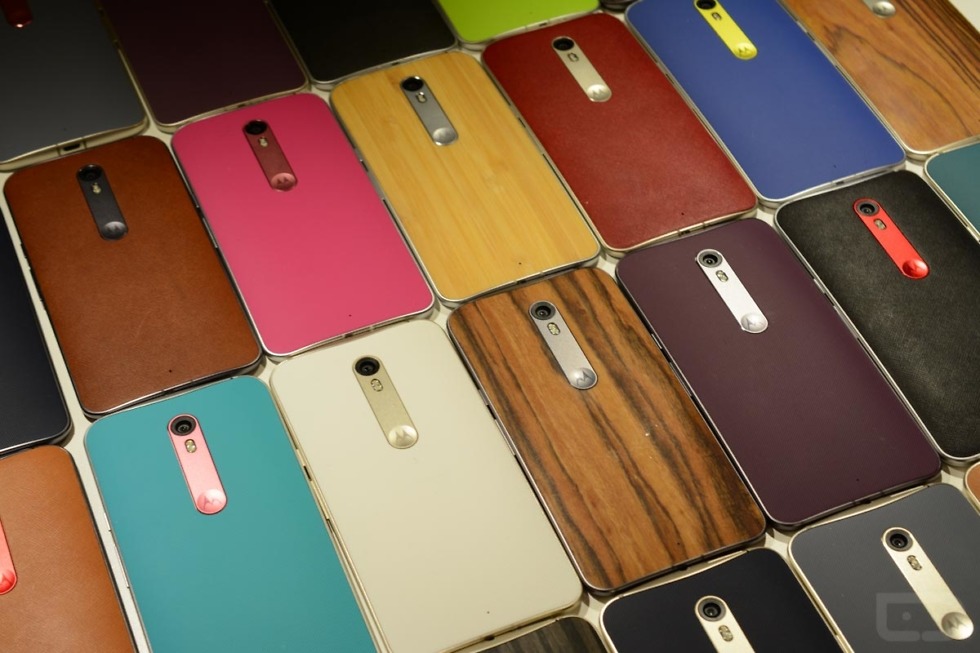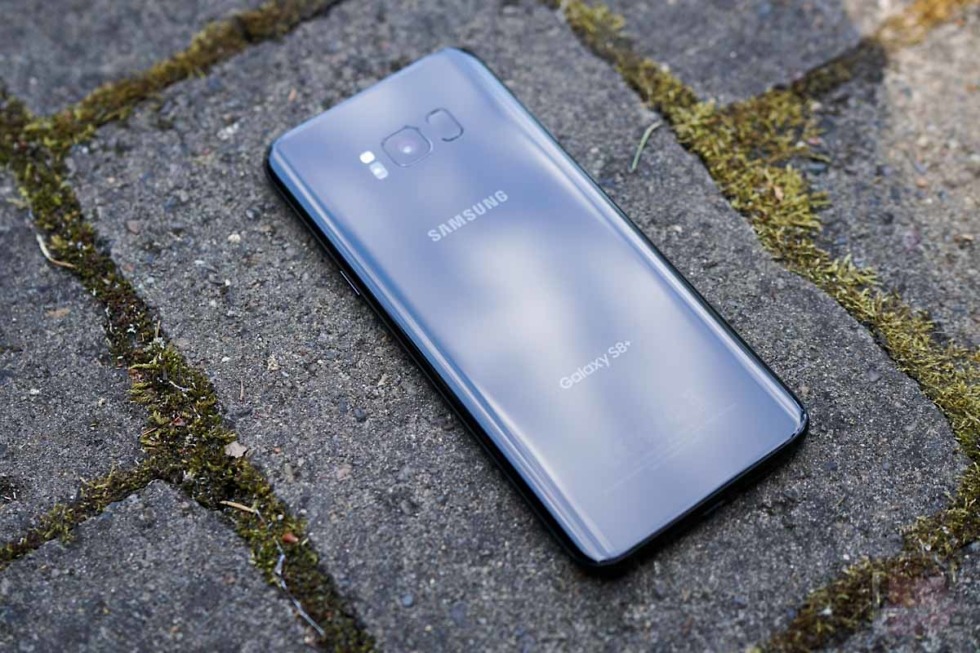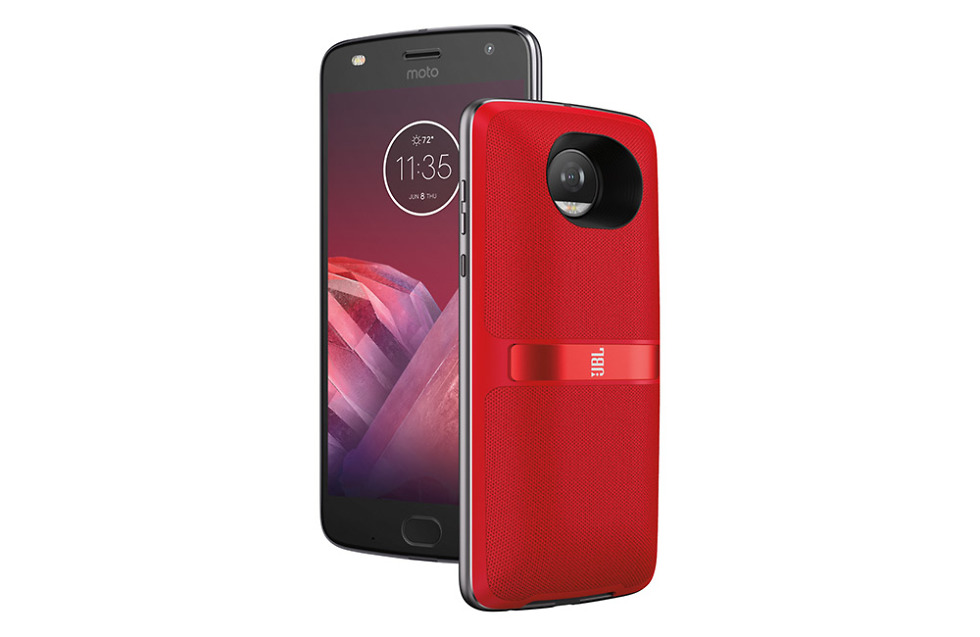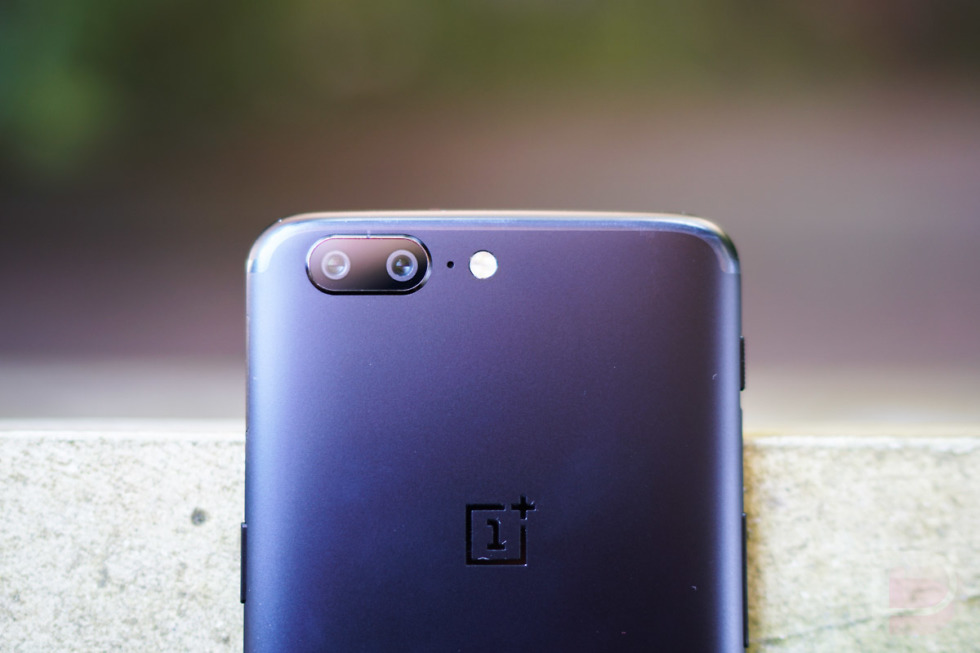
If you want to buy a smartphone for personal use, there’s no denying there are a ton of options to choose from. However, sometimes phones that are made for consumers are not good choices for businesses to give to their employees. Companies may want to have phones that are perhaps more powerful than the average handset, or have some special security features.
See also:

Best Android phones (June 2017): our picks, plus a giveaway3 weeks ago
The good news is that there are plenty of smartphones that are well suited for business and enterprise use, and some of them come with features specifically made for those needs. Here’s a list of what we think are the current best phones for business use.
Samsung Galaxy S8/S8 Plus

Samsung’s current flagship devices, the 5.8-inch Galaxy S8 and the 6.2-inch Galaxy S8 Plus, are excellent choices for businesses for two reasons. One is that both phones have some extra security features not found on many other phones. That includes an iris scanner that allows owners to launch the phones with their eyes. There are also options to open the phones with a fingerprint scanner, located in the back, and even facial recognition support via the phones’ cameras. Both phones also come with support for Samsung Knox, which the company claims gives owners hardware-based security that is up to military grade levels.

The other big feature is the phones’ support for Samsung DeX, an optional hardware dock that, when connected to a monitor, mouse and keyboard, can turn the Galaxy S8 or S8 Plus into a Windows-like PC desktop experience. For business employees who work at multiple offices, but don’t want to lug a heavy laptop around, this solution could be a solid replacement.
Both of the new Galaxy S8 phones have the Qualcomm Snapdragon 835 processor inside, and their large displays can easily handle more than one app running on the screen at a time. While both phones are a bit expensive, their security and features make them the perfect choice for businesses.
Specifications
Samsung Galaxy S85.8-inch Super AMOLED display with 2960 x 1440 resolution, 570 ppi
Octa-core Qualcomm Snapdragon 835 or Octa-core Samsung Exynos 8895 processor (depending on region)
4 GB of RAM
64 GB of on-board storage, microSD expansion up to 256 GB
12 MP rear camera, 8 MP front camera
Non-removable 3,000 mAh battery
Android 7.0 Nougat
148.9 x 68.1 x 8 mm, 155 g
Samsung Galaxy S8 Plus6.2-inch Super AMOLED display with 2960 x 1440 resolution, 529 ppi
Octa-core Qualcomm Snapdragon 835 or Octa-core Samsung Exynos 8895 processor (depending on region)
4 GB of RAM
64 GB of on-board storage, microSD expansion up to 256 GB
12 MP rear camera, 8 MP front camera
Non-removable 3,500 mAh battery
Android 7.0 Nougat
159.5 x 73.4 x 8.1 mm, 173 g
Read more:Best Samsung Galaxy S8 cases
Best Samsung Galaxy S8 Plus cases
Buy Galaxy S8 at Amazon
Buy Galaxy S8 Plus at Amazon
OnePlus 5
The recently launched OnePlus 5 is the latest phone from China-based OnePlus. It packs in a ton of high-end features that are found on many flagship phones, but offers them at a much more affordable cost. Like the Samsung Galaxy S8, the OnePlus 5 has the Qualcomm Snapdragon 835 processor, but adds more RAM and storage options, with one featuring 6 GB of RAM and 64 GB of storage for $479, and another with 8 GB of RAM and 128 GB of storage for $539.
While the OnePlus 5 isn’t quite as security focused as the new Samsung Galaxy phones, it does offer features that businesses will like, such as a fast charge time with its Dash Charge feature. It allows the OnePlus 5 to get up to 50 percent of its total charge in just 30 minutes, which is highly useful for employees on the go who may only have a limited time to charge up their device. Also, its Android 7.1.1 Nougat-based Oxygen OS includes some built-in features such as a new reading mode can can turn its display into a grayscale look, along with the use of a blue light filter. This makes reading text easier, which again could be a huge help for employees who need to read reports and company plans on their phone a lot.
Specifications
5.5-inch display with 1,920 x 1,080 resolution
Octa-core Qualcomm Snapdragon 835
4 or 6 GB of RAM
64 GB or 128 GB of storage
13 MP rear camera, 20 MP telephoto rear camera, 16 MP front-facing camera
3,300 mAh battery
Android 7.1.1 Nougat, OxygenOS
Front-mounted fingerprint sensor
154.2 x 74.1 x 7.25 mm, 153 grams
Read MoreThese are the official OnePlus 5 cases
OnePlus 5 impressions from a Galaxy S8 user
See it at OnePlus
Motorola Moto Z and Moto Z Force

While these are older phones at this point, the Moto Z and Moto Z Force are both interesting choices for businesses because of their support for Moto Mods. These first and third-party accessories connect magnetically to the back of the Moto Z and can offer improvements and new features for the phone. Moto Mods that have already been released include some battery packs that help extend the overall use of the Moto Z on a single charge, which is always helpful for business customers.
Other Moto Mods add-ons include putting in a more advanced camera with a 10x optical zoom made by Hasselblad and a JBL speaker for much improved sound quality. Perhaps the most interesting Moto Mod accessory that’s currently on the market is the projector. When attached to the Moto Z, it can put an image of the phone’s screen on a wall, up to 70 inches. This kind of feature is perfect for an employee who needs to make a quick presentation in a meeting room but doesn’t want to use a bulky standard projector connected to a PC.
The current crop of Moto Mods will also be supported for the next generation versions of Motorola’s Moto Z family, the already announced Moto Z2 Play, which is due for release in July, along with the rumored Moto Z2, which is expected to be officially revealed later this summer. Even more Moto Mods are planned for release over the next several months.
Specifications
Moto Z 5.5-inch AMOLED display with Quad HD resolution
2.15 GHz Qualcomm Snapdragon 820
4 GB of RAM
32 GB or 64 GB of onboard storage, expandable up to 256 GB
13 MP rear camera, 5 MP front camera
2,600 mAh battery
Android 6.0 Marshmallow
153.3 x 75.3 x 5.2 mm, 136 grams
Samsung Galaxy S8 Plus5.5-inch AMOLED display with Quad HD resolution
2.15 GHz Qualcomm Snapdragon 820
4 GB of RAM
32 GB or 64 GB of onboard storage, expandable up to 256 GB
21 MP rear camera, 5 MP front camera
3,500 mAh battery
Android 6.0 Marshmallow
155.9 x 75.8 x 7 mm, 163 g
Read More:Moto Z and Moto Z Force Cases
See it at Motorola
BlackBerry KEYone

Remember when using the term “CrackBerry” meant that you were addicted to using your BlackBerry phone? While those days have come and gone, the classic BlackBerry name and phone design recently came back in the form of the KEYone. The phone was actually made by TCL Communication, but the influence from BlackBerry is evident in more than just the name and logo.
Many BlackBerry fans, especially business users, will be happy with the QWERTY physical keyboard on the bottom of the KEYone. It’s not in place for nostalgia’s sake; business users will likely prefer a more tactile experience for using the phone’s features compared to the now standard touchscreen. Owners of this phone can use keyboard shortcuts, which require the BlackBerry Launcher, to help launch Android apps instead of touching its display.
Speaking of software, the KEYOne comes pre-loaded with BlackBerry’s own DTEK security app. It is supposed to help monitor any malware issues that might crop up in apps or even in the Android OS. This is, of course, highly important for business users. The phone also includes a productivity tab, to give users faster access to important messages, upcoming calendar tasks, contacts and more. While long time BlackBerry fans will certainly love the KeyONE, this phone would be a great business device choice for anyone else.
Specifications
4.5-inch display with 1,620 x 1,080 resolution
Octa-core Qualcomm Snapdragon 625 running at 2.0 GHz
3 GB of RAM
32 GB of storage
12 MP rear camera, 8 MP front-facing camera
3,505 mAh battery
Android 7.1.1 Nougat
149.3 x 72.5 x 9.4 mm, 180 grams
Read More:Android 7.1.1 Nougat review
See it at BlackBerry
Apple iPhone 7/Plus
Okay, as Android fans, we were a bit hesitant to put this one on the list. But let’s face reality, despite our preferences, the iPhone is very common in the workplace, especially in the United States. While Android’s flexibility, in our opinion, makes it a much more adaptable platform for just about any type of business, Apple has a pretty notable presence in the health care industry, education, and beyond.
At least according to Apple (take with grain of salt), 99% of Fortune 500 companies are using iOS on their networks — obviously not necessarily exclusively, but the point is that Apple has a place in business. Apple’s current flagship phones are the iPhone 7 and iPhone 7 Plus. Both come with iOS 10 out of the box and both come with the company’s own quad-core A10 Fusion processor inside with a clock speed of 2.34 GHz, which is supposed to be twice as fast as the chip inside the older iPhone 6 models. Both can be purchased in 32 GB, 128 GB and 256 GB storage options and both also have 2 GB of RAM.
Pricing for the iPhone 7 and iPhone 7 Plus depends on the carrier, along with the amount of its onboard storage, but the starting prices for the smaller phone begin at $649 up front, or for $32.41 a month for a standard carrier contract. The iPhone 7 Plus has an up front starting price of $769, or a per month payment of $37.41 under contract.
Specs
iPhone 74.7-inch display with 1,334 x 750 resolution
2.34 GHz quad-core A10 Fusion processor
2 GB RAM
32 GB, 128 GB or 256 GB of onboard storage, non-expandable
12 MP rear camera, 7 MP front-facing camera
1,960 mAh battery
iOS 10
Front-mounted fingerprint sensor
5.44 x 2.64 x 0.28 inches, 4.87 ounces
iPhone 7 Plus5.5-inch display with 1,920 x 1,080 resolution
2.34 GHz quad-core A10 Fusion processor
2 GB RAM
32 GB, 128 GB or 256 GB of onboard storage, non-expandable
Dual 12 MP rear camers, 7 MP front-facing camera
2,900 mAh battery
iOS 10
Front-mounted fingerprint sensor
6.23 x 3.07 x 0.29 inches, 6.63 ounces
Read More
OnePlus 5 vs Apple iPhone 7 Plus: quick look
Google Pixel XL vs Apple iPhone 7 Plus
Get it at Apple
Conclusion
As usual, the smartphone ecosystem changes nearly ever day, so if any new devices pop up that we think would be good for business customers, we will update this list with the latest and greatest. In the meantime, which smartphones on the market do you think should be on this list? Let us know your opinion in the comments!
Best phones for business use

 Samsung Galaxy S8 and Galaxy S8 Plus review: Almost to InfinityApril 18, 2017
Samsung Galaxy S8 and Galaxy S8 Plus review: Almost to InfinityApril 18, 2017 Android O is hot off the production line, and app developers are scrabbling to learn the powerful new capabilities. Even if you’re not a developer yet, you can get straight to the front line of app building through The Android O & Java Developer Mastery Course.
Android O is hot off the production line, and app developers are scrabbling to learn the powerful new capabilities. Even if you’re not a developer yet, you can get straight to the front line of app building through The Android O & Java Developer Mastery Course. Should the Moto X line makes its triumphant return later this year, it could do so as the first non-Google-branded Project Fi device. That’s according to a report out of Venturebeat, claiming that the “mid-tier” device referenced in a Tweet yesterday by the Project Fi team, is indeed the new Moto X, thought to be named Moto X4.
Should the Moto X line makes its triumphant return later this year, it could do so as the first non-Google-branded Project Fi device. That’s according to a report out of Venturebeat, claiming that the “mid-tier” device referenced in a Tweet yesterday by the Project Fi team, is indeed the new Moto X, thought to be named Moto X4.
 Read more120Hz adaptive displays: the future or just a gimmick?
Read more120Hz adaptive displays: the future or just a gimmick?

 15 best arcade games for AndroidJuly 11, 2016
15 best arcade games for AndroidJuly 11, 2016
 A big holiday weekend is here in the US and I know you have beer to drink, but there was some good Android stuff this week to recap. For one, Google Photos and its fancy new sharing features from Google I/O have arrived. It’s awesome. I’ve already got every single picture of my son heading straight to my wife’s Photos account seconds after I take them. Pretty sweet.
A big holiday weekend is here in the US and I know you have beer to drink, but there was some good Android stuff this week to recap. For one, Google Photos and its fancy new sharing features from Google I/O have arrived. It’s awesome. I’ve already got every single picture of my son heading straight to my wife’s Photos account seconds after I take them. Pretty sweet. For weeks, Samsung and its retail partners were selling the US unlocked Galaxy S8 and Galaxy S8+ at a $100 discount. If you didn’t pounce on it (along with that crazy trade-in deal), I hate to tell you that the price is back up. However, Best Buy has replaced that $100 discount with a $200 gift card deal that’s not half bad.
For weeks, Samsung and its retail partners were selling the US unlocked Galaxy S8 and Galaxy S8+ at a $100 discount. If you didn’t pounce on it (along with that crazy trade-in deal), I hate to tell you that the price is back up. However, Best Buy has replaced that $100 discount with a $200 gift card deal that’s not half bad. The Moto Z2 Play has only been available for 24 hours and already Best Buy has a good deal on it. If you buy the phone from BBY on a device payment plan, they’ll slash $50 off the total price. That brings your monthly payment to just $14.91 per month (down from $17 per month).
The Moto Z2 Play has only been available for 24 hours and already Best Buy has a good deal on it. If you buy the phone from BBY on a device payment plan, they’ll slash $50 off the total price. That brings your monthly payment to just $14.91 per month (down from $17 per month).
 The challenges facing mobile VRMay 16, 2017
The challenges facing mobile VRMay 16, 2017
 Pokémon Go demonstrates the mainstream appeal of augmented reality
Pokémon Go demonstrates the mainstream appeal of augmented reality The Microsoft Hololens has a somewhat limited field of view but according to reports, it otherwise delivers on the promise shown in images like this
The Microsoft Hololens has a somewhat limited field of view but according to reports, it otherwise delivers on the promise shown in images like this
 Give that all a moment to sink in, virtual cat
Give that all a moment to sink in, virtual cat 


 What’s the difference between a Li-ion and solid-state battery?November 8, 2016
What’s the difference between a Li-ion and solid-state battery?November 8, 2016

 First footage from Essential Phone’s 360-degree camera add-on posted online3 weeks ago
First footage from Essential Phone’s 360-degree camera add-on posted online3 weeks ago

 Motorola reveals the 12 finalists for its Moto Mods developer challengeFebruary 9, 2017
Motorola reveals the 12 finalists for its Moto Mods developer challengeFebruary 9, 2017
 Is Amazon Prime really worth it?July 11, 2016
Is Amazon Prime really worth it?July 11, 2016
 Taking a look at the Nokia 3, 5, and 6: Baby stepsFebruary 27, 2017
Taking a look at the Nokia 3, 5, and 6: Baby stepsFebruary 27, 2017 Moto G5 Plus reviewApril 13, 2017
Moto G5 Plus reviewApril 13, 2017
 LG V30: all the rumors in one place5 days ago
LG V30: all the rumors in one place5 days ago
 Best Android phones (June 2017): our picks, plus a giveaway3 weeks ago
Best Android phones (June 2017): our picks, plus a giveaway3 weeks ago





 If you were to ask me what the hot smartphone trend of the moment is, I’d probably go with dual cameras. The OnePlus 5 just dropped and it has dual cameras, a setup that OnePlus has spent a heck of a lot of time talking about. We know the iPhone 7 Plus has dual cameras. Huawei phones have them now. So do LG’s. Future Motorola phones appear to be leaning that way. And of course, the Galaxy Note 8 should have 2 cameras on its backside.
If you were to ask me what the hot smartphone trend of the moment is, I’d probably go with dual cameras. The OnePlus 5 just dropped and it has dual cameras, a setup that OnePlus has spent a heck of a lot of time talking about. We know the iPhone 7 Plus has dual cameras. Huawei phones have them now. So do LG’s. Future Motorola phones appear to be leaning that way. And of course, the Galaxy Note 8 should have 2 cameras on its backside.
 OnePlus investigating OnePlus 5 “Jelly Scrolling” issue11 hours ago
OnePlus investigating OnePlus 5 “Jelly Scrolling” issue11 hours ago Amazon Prime Day is back for 2017! Not that we weren’t expecting it to be back, since Amazon makes a killing during promotions like this. Anyways, July 11 is the big day for all of the mid-summer discounts you’ll convince yourself you need from Amazon.
Amazon Prime Day is back for 2017! Not that we weren’t expecting it to be back, since Amazon makes a killing during promotions like this. Anyways, July 11 is the big day for all of the mid-summer discounts you’ll convince yourself you need from Amazon.